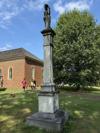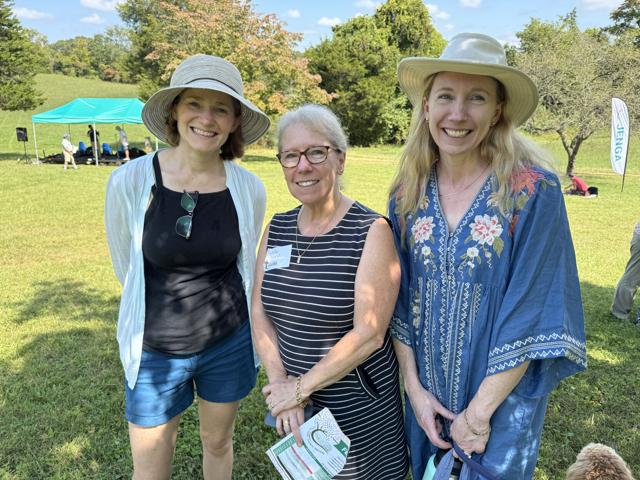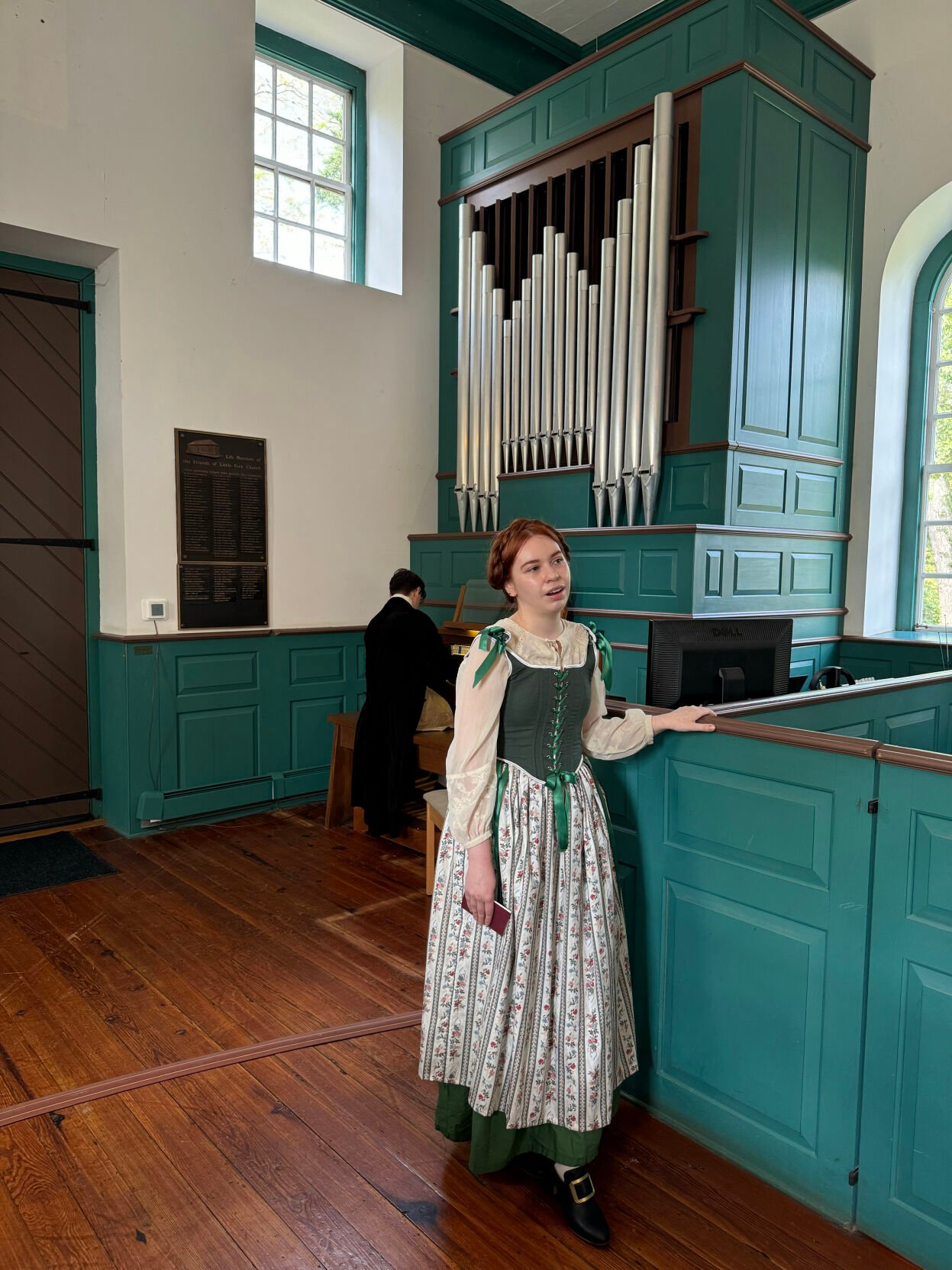
web_LittleForkChurch-26c.jpg
Julie Basic, Michelle North and Erin North worked together to plan Little Fork’s proposed park and walking trail, as well as securing grants from the Recreational Trails Program (RTP) and the PATH Foundation to fund the project.
State, local grants help to make it happen
A Colonial-era church, a few miles east of Amissville, has developed a plan that will devote 16 acres of its property for a park and walking trail that will welcome the public between dawn and dusk.
Little Fork Episcopal Church in northern Culpeper County celebrated the proposed park and trail system with a festival last Saturday on its grounds.
To be funded by a $168,780 grant from the Recreational Trails’ program through the Virginia Department of Conservation and Recreation, a $25,000 “Make It Happen” grant from the PATH Foundation as well as private donations, the project was “a dream in the making since our congregation began master planning in 2020,” said The Rev. Stacy Williams-Duncan, Little Fork’s rector, during an announcement ceremony at the festival.
“We are incredibly grateful for the support from our neighbors and the wider community. This grant allows us to make our vision of an inclusive, accessible outdoor space a reality for everyone,” she said.
Williams-Duncan noted how unusual it is for a state agency to give a grant to a religious organization.
”But everyone we have approached has been very excited about our proposal,” she said. “People recognize we are making an effort to serve the broader community.”
Little Fork Episcopal Church and the 1776 Little Fork Preservation Foundation — both 501(c)(3) nonprofit organizations — have collaborated on the trail project, which also includes a .9 mile, ADA-accessible walking trail adjacent to the historic church and parish hall. Construction is expected to begin in 2025 and be complete in 2026.
Visiting Bishop The Rt. Rev. Ted Gulick pronounced it an exciting day for the parish.
”I want to thank all of you who worked so hard to make this grant happen,” he said during the ceremony. “The creation itself is a sacrament, and celebrating nature in this way is central to what we believe.”
Organizers estimated about 300 visitors attended Saturday’s festival.

web_LittleForkChurch-26a.jpg
The Johnsons, Colonial Music in Costume, perform inside Little Fork Church during the festival last Saturday.
Historic presentations were offered inside the church, including one from The Rev. Jenks Hobson, former rector of Trinity Episcopal Church in Washington, Va., sharing the history of the Episcopal Church in this part of Virginia and family connections.
Archaeologist Eric Larsen of Historic Germanna spoke about the indigenous people of the Little Fork area; Andrew Gutowski shared stories of the region’s involvement in the Revolutionary War and Bob Lee gave an introduction to Little Fork Church’s heritage. Colonial musicians performed period pieces inside the church.
Live bands such as Silver Tones Swing Band, Remington Steel and Jeremy Fox played on an outdoor stage while a variety of food trucks provided nourishment, such as Southern Flare and Brick City Kitchen.
“Unexpected for me was how much fun the magic show was,” said Michelle North, a community representative on the Trail Committee. “Rabbit, doves and magical ropes — Wes Iseli was very entertaining!”
Funds were raised for local charities during the festival, with attendees purchasing Christmas ornaments as a donation to benefit organizations such as the Little Fork Volunteer Fire & Rescue Company, Plant Virginia Natives, Services to Abused Families, Episcopal Relief & Development, the Culpeper Food Pantry and Culpeper Pride.
Church history
Little Fork Episcopal Church is listed on the Virginia Landmarks Register and the National Register of Historic Places. According to Little Fork’s history, the church was founded in 1730, making it one of the oldest in Virginia. The current brick meetinghouse was built between 1773 and 1776 after two previous wooden structures burned down.
During the Civil War, Union soldiers camped around the church during the winter of 1863-64 and used its inner furnishings to build huts and for firewood. Church legend claims one of these soldiers sent Little Fork $100 after the war to help pay for the damage.

web_LittleForkChurch-26b.jpg
A monument stands on Little Fork Church’s grounds honoring men from its congregation who fought in the Civil War. The monument is slated to be moved to a point along a walking path that will explain the history chronologically.
For the next 100 years the church was vacant. In his 1963 book, “Virginia’s Colonial Churches,” James Scott Rawlings wrote that Little Fork “although, as an architectural monument, is without a superior in Culpeper, Orange, Fauquier, Rappahannock, Madison, and still other nearby counties … is one of the two or three most neglected of colonial churches.”
Concerned citizens rallied and funds were raised for Little Fork’s restoration, which was launched in 1976 on its bicentennial, and took three years to complete. With its boxed pews and wine-glass pulpit, the restored interior was designed to appear exactly as it was when parishioners first worshiped there in 1776.
North said she has been enthusiastic about the trail project since it was first suggested four years ago.
”Our family has had a long history with Little Fork Church and we are excited about the new opportunities the trail and open space will provide to our neighbors in Northern Culpeper, Fauquier and Rappahannock counties,” she said.
”The church is widening its arms and welcoming the community to enjoy what will become a comprehensive, publicly accessible park on the church’s grounds.”
For more information on the trail project or to get involved, visit littleforkchurch.org/master-plan or contact the church office at 540-937-4306.






